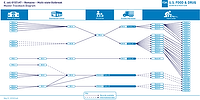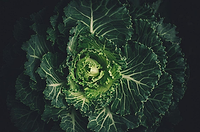FDA Releases Overview of the Latest Romaine Lettuce E. coli Outbreak

Yesterday, the U.S. Food and Drug Administration (FDA) released an overview of the investigation of the romaine lettuce outbreak of Escherichia. coli O157:H7 infections in multiple U.S. states and Canadian provinces in late 2018 and early 2019.
The investigation, which included FDA, the U.S. Centers for Disease Control and Prevention (CDC), state partners, the Public Health Agency of Canada, and the Canadian Food Inspection Agency, implicated one source of the outbreak: Adams Bros. Farming located in Santa Maria (Santa Barbara County), CA. At that farm, investigators found an environmental sample that tested positive for the presence of the outbreak strain of E. coli O157:H7. While there is no evidence to indicate that this farm is the sole source, the outbreak strain of E. coli O157:H7 was not detected in any other samples collected during this investigation.
Because much of FDA’s overview contains details that have been previously reported and published, here is a snapshot of some of the new information that the overview reveals:
- Adams Bros. Farm, identified in multiple legs of the U.S. and Canadian traceback investigations, was also identified as one of the potential suppliers of leafy greens or romaine lettuce associated with a 2017 outbreak.
- FDA has concluded that the water from the on-farm water reservoir where the outbreak strain was found most likely led to contamination of some romaine lettuce consumed during this outbreak.
- Traceback investigation analysis indicated that other ranches owned by the same farm as well as other farms may have introduced into commerce contaminated romaine lettuce or other produce items. These other farms did not use water from the water reservoir where the outbreak strain of E. coli O157:H7 was found and FDA was unable to identify a potential source of contamination.
- FDA has concluded that the water from the on-farm water reservoir where the outbreak strain was found was most likely not effectively treated with a sanitizer and this may have led to contaminated water directly contacting romaine lettuce after harvest or by the washing/rinsing harvest equipment food contact surfaces.
- FDA does not know how and when the on-farm water reservoir became contaminated with the outbreak strain. No evidence was found to identify and confirm an obvious route for on-farm contamination, or from adjacent land, to the on-farm water reservoir. Other explanations regarding how the on-farm water reservoir was contaminated with the E. coli O157:H7 outbreak strain aside from the potential contributing factors identified in this report are possible.
- Foodborne illness outbreaks caused by this specific strain of E. coli O157:H7 occurred in 2016, 2017, and 2018, indicating that the outbreak strain may have either persisted in the environment or may been repeatedly introduced into the environment from an unknown source. Public health officials in the U.S. and Canada were unable to definitively confirm the food vehicle and ultimate source(s) of the 2016 and 2017 illnesses.
The outbreak, which sickened 62 people in 16 states and the District of Columbia, was declared over in the U.S. by the CDC on January 9, 2019.
In response to FDA's overview, STOP Foodborne Illness released its own statement:
“Stop Foodborne Illness appreciates FDA’s effort to promptly investigate the root cause of the recent outbreak of illness associated with romaine lettuce from California, as well as the agency’s issuance of advice to industry on measures that could help prevent future outbreaks. This is a critical element of FDA’s public health mission, and consumers expect both FDA and industry to take every step possible as soon as possible to learn from past mistakes to prevent future illnesses.”
Signed,
Michael Taylor, Stop Foodborne Illness Board Co-Chair
Lauren Bush, Stop Foodborne Illness Board Co-Chair
More on the romaine lettuce outbreak overview:
Statement from Scott Gottlieb and Frank Yiannas
Looking for a reprint of this article?
From high-res PDFs to custom plaques, order your copy today!





